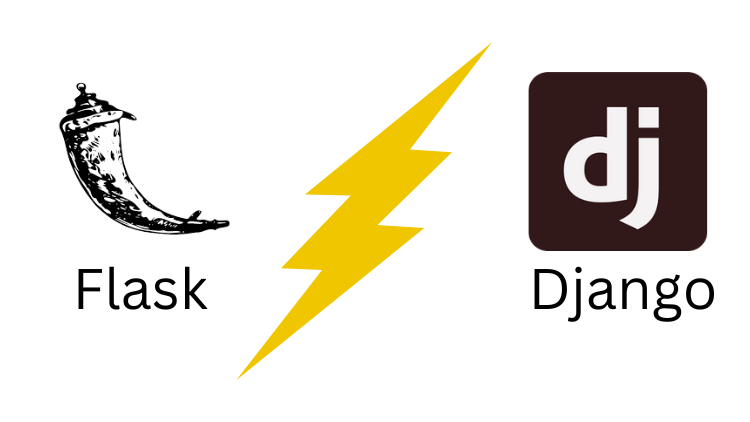Flask vs. Django: Choosing the Right Python Web Framework for You
 Jeevan
Jeevan
Choosing a web framework for your Python project is a crucial decision, and two popular options are Flask and Django. Both have their strengths, but they cater to different needs. Let's explore the key differences between Flask and Django to help you make an informed decision.
Flask: The Micro Framework
Simplicity and Flexibility: Flask is known for its minimalistic and lightweight design. It follows the "micro" framework philosophy, providing the essentials for web development without imposing a rigid structure. This simplicity makes Flask easy to understand and allows developers the flexibility to choose components based on their project requirements.
Learning Curve: Flask has a gentle learning curve, making it an excellent choice for beginners. Developers can quickly get started and build small to medium-sized projects without grappling with an extensive set of conventions.
Scalability: While Flask is great for small to medium projects, its minimalist approach also allows it to scale for larger applications. Developers can add components and structure as needed, making it adaptable to diverse project sizes.
Community and Ecosystem: Flask has a vibrant and active community. While Flask may not have as many built-in features as Django, the Flask ecosystem compensates with various extensions and third-party libraries. This extensibility allows developers to tailor their applications to specific needs.
Django: The Full-Stack Framework
Batteries Included: Django is often called a "full-stack" framework because it has many built-in features and a well-defined structure. It includes an ORM (Object-Relational Mapping), an admin panel, and built-in authentication, among other features. This makes it suitable for larger and more complex projects, reducing the need to search for external packages.
Built-in Admin Interface: One standout feature of Django is its powerful admin interface. With just a few lines of code, developers get a fully functional admin panel to manage database records. This can be a significant time saver for projects that require robust content management.
Opinionated Structure: Django follows the "don't reinvent the wheel" philosophy and enforces a more opinionated structure. This is useful for developers who prefer a clear project layout and predefined conventions. However, it might feel restrictive for those who prefer more freedom in choosing components.
Learning Curve: Django's feature richness adds a steeper learning curve than Flask. While it might take more time for beginners to grasp, it is beneficial to larger teams and projects where a standardized approach is crucial.
Choosing Between Flask and Django: What Fits Your Project?
Choose Flask If:
You value simplicity and want to start small.
Flexibility in choosing components is essential for your project.
You are a beginner looking for an easy entry point into web development.
Choose Django if:
Your project requires a comprehensive set of built-in features.
A clear, opinionated structure is preferred for your development team.
Your project needs a robust admin interface for content management.
In conclusion, the choice between Flask and Django depends on the nature and scale of your project. Flask offers simplicity and flexibility, making it an excellent choice for smaller projects with lots of freedom. Django, with its built-in features and structured approach, is well-suited for larger projects with a need for efficiency and convention. Ultimately, both frameworks have their merits, and the best choice depends on your specific project requirements and development preferences.
Subscribe to my newsletter
Read articles from Jeevan directly inside your inbox. Subscribe to the newsletter, and don't miss out.
Written by
